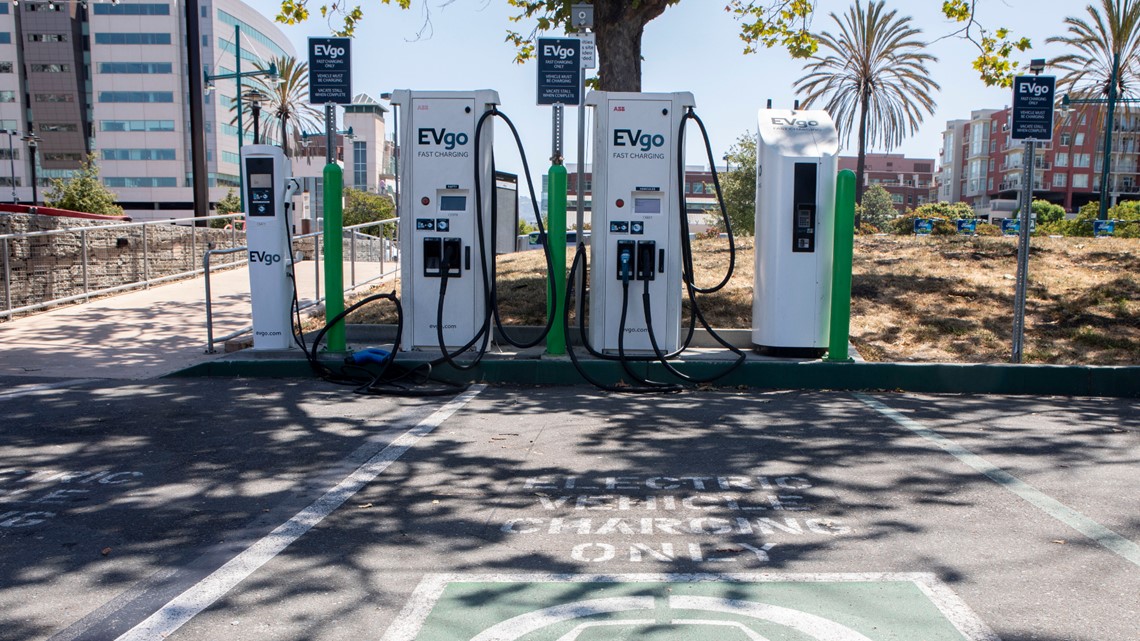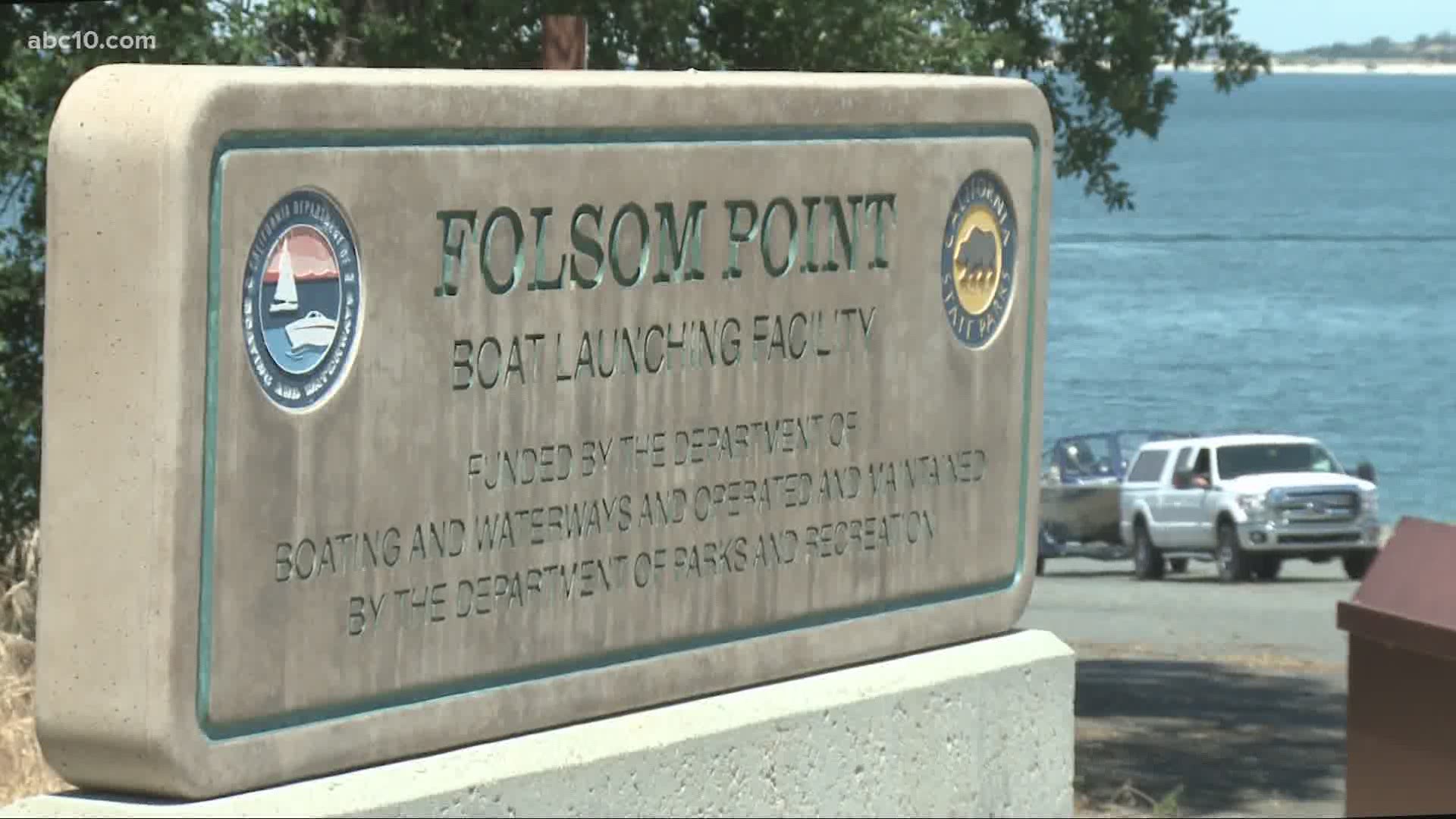SACRAMENTO, Calif — Wide-ranging environmental programs announced with much fanfare in January have disappeared from California Gov. Gavin Newsom’s newest budget proposal, casualties of the global economic collapse during the pandemic.
Gone are ambitious initiatives to create a $1 billion climate catalyst fund to provide low-interest loans for private and public environmental projects, three-quarters of funding for the first new state park in more than a decade and a $4.75 billion ballot initiative to pay for local projects to adapt to climate change.
Even as he outlined deep and painful cuts across all state agencies, Newsom promised to maintain programs that keep Californians safe and healthy. The governor said his proposed budget kept in place policies that reflect the state’s “core values.”
“We have been making historic investments in the last many years in the state of California,” Newsom said while unveiling the budget on Thursday. “And now being forced back into this position where we are having to make cuts breaks my heart.”
The cuts, which are subject to review by the legislature, come at a particularly fraught moment: The state is locked in years-long legal and philosophical battles with the Trump administration over its rollback of environmental regulations.
Now, as California’s economy reels amid the novel coronavirus pandemic, the state may lose its ability to offset the impact of Washington’s climate inaction.
“California has in part covered for the failure of the federal government to act on climate change by really moving forward with its programs,” said Ken Alex, director of Project Climate at the Center for Law, Energy, and the Environment at the University of California, Berkeley who served as senior policy advisor to Gov. Jerry Brown. “And now that’s not going to be possible for at least for a period of time, given the budget problems.”
READ MORE:
State officials said that California isn’t backing away from prioritizing environmental protections, but that the harsh realities of the economic meltdown require difficult compromises.
“Leaders around the world are all suffering similar economic fates,” said Jared Blumenfeld, secretary of the California Environmental Protection Agency. “We can stand proud and say that even during these difficult times we are committed to meet our ambitious goals, we are not going backwards.”
Officials said the budget cuts were not wholesale eliminations but careful triage, and the result of considerable debate.
For example, the proposal to purchase land for a new state park was not shelved, but pared back, reducing available funds from $20 million to $5 million. The parks agency lost $30 million from its budget. And the chronically-underfunded Department of Fish and Wildlife saw its budget reduced by $33 million.
Environmental enforcement in California’s oil regions may suffer, as CalGEM, the state’s oil and gas regulator, will not gain 120 new positions that it needed to bolster oilfield inspections. The agency’s request was opposed by California oil and gas producers.
Gone, too, are new employees that would have overseen the requirements of a new state law requiring energy producers to post adequate funds into an environmental cleanup bond.
Amid the cuts in the revised budget is a dramatic number: a 94% drop in money from the state’s general fund set aside for environmental protection compared with the current year. It’s eye-catching, but it’s also not the whole story.
Many of those cuts from the general fund were already embedded in Newsom’s January budget proposal, which was down $533 million — or about 79% — from the current year, according to the Legislative Analyst’s Office. That’s largely because of one-time or limited term funding that expired, including money set aside for cleaning up debris from wildfires and lead contamination at the Exide battery recycling facility in Vernon, near Los Angeles.
There has been less money available for programs funded by California’s cap and trade program, which was expected to begin the 2020–2021 budget year with about $427 million less in the bank, because of a temporary surplus the previous year.
Now, companies covered by cap and trade may opt not to buy permits to pollute — which would mean less money for the range of projects that the program underwrites.
Facing uncertain revenues in the year ahead, state officials said they would prioritize programs aimed at improving air quality in disadvantaged communities, providing safe and affordable drinking water and improving forest health and fire protection.


The urgency to electrify transportation, which accounts for 40% of the state’s planet-warming greenhouse gases, is in part dependent on auction proceeds to help develop zero-emission trucks and buses. That additional boost is now in question.
Without a push from the state to help private industry develop next-generation clean vehicles, advocates say there’s no way for California to meet its broader climate change goals or to ensure clean air across the state.
“We are in a world of hurt, these cuts are a big deal,” said Kathryn Phillips, director of the California Sierra Club. “Accelerating transition through new technology is through incentives, that’s pretty well established.”
Scratched from the budget entirely is the $1 billion climate catalyst fund, a low-interest loan program to seed efforts aimed at greening transportation, recycling and agriculture.
State officials have maintained that it’s never been more critical to hold the line on environmental rollbacks, given the Trump administration’s campaign to “streamline” federal regulations seen as an impediment to industry.
READ MORE:
On March 26, the U.S. Environmental Protection Agency announced that due to the COVID-19 pandemic, it would temporarily allow some violations of environmental regulations.
Even before the pandemic, federal agencies under President Trump unraveled scores of existing environmental policies, many enacted by President Obama. These include weakening regulations on vehicle and fossil fuel plant emissions, allocating more land for fossil fuel extraction and backing down on regulating air pollution from national and state parks.
Regulations on emissions and air pollution have been most affected, according to a New York Times list. Limits on fossil fuel extraction have also suffered. So far, the White House has rolled back or plans to weaken almost 100 policies governing environmental protection.
Some changes were the result of Executive Orders by the president.
The effects of these policies could be far-reaching, particularly in California, which has the nation’s worst air quality. For instance, current plans put the U.S on track to emit more greenhouse gases than three quarters of the countries on earth, according to a report by the Rhodium Group. Poor air quality could put thousands of lives at risk, according to a 2018 Harvard University analysis.
But state regulators also have a large role in protecting the environment, working in concert with or even superseding federal policymakers.
A rule enabling California to set its own standards for auto emissions has enabled it to reduce its emissions significantly in the past 50 years. But the Trump administration’s attempts to end this policy have led California to sue the federal government twice already.
CalMatters.org is a nonprofit, nonpartisan media venture explaining California policies and politics.

